
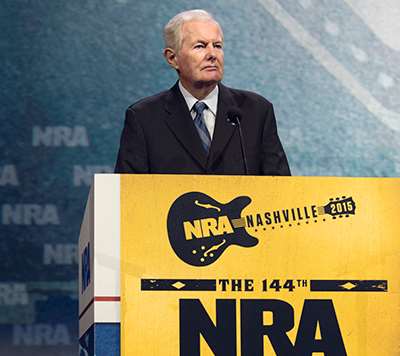
Allan D. Cors is an NRA man for all seasons. Elected as the 63rd president of the Association, there is virtually no aspect of the NRA’s mission that he has not significantly contributed to during his 50 years service to the cause of preserving and enhancing the Second Amendment. He is an esteemed collector, historian, distinguished shooter, avid hunter and effective speaker and leader.
But above all, Allan is unique as a political pathfinder, without whose efforts American liberty as we know it today might have been erased long ago.
As a young attorney in the 1960s, Allan served as a minority counsel to the Judiciary Committee of the U.S. House of Representatives. Without his presence during the legislative disaster that brought about the onerous 1968 Gun Control Act (GCA), free Americans surely would have been subjected to gun-owner registration, licensing and gun bans. In the days leading up to the panicked enactment of the GCA, the National Rifle Association could be described as the quiet nexus of organized shooting—a big, friendly gun club.
“Gun control was not an issue that anybody thought much about in the ’50s and early ’60s. Legislation that was proposed never went very far,” Cors recalls.
“The real problem came in 1967 when President Lyndon Johnson—taking a terrible beating over his Vietnam War policy—needed a major diversion and took on gun control as a way to recover his mark as president.
“With stalwarts like Nebraska Senator Roman Hruska in the U.S. Senate and Michigan Congressman John Dingell in the U.S. House, the threats were under control. All that changed in 1968 with the assassination of civil rights leader Martin Luther King. The country just blew up. We had riots in every major city. It was a very sad, difficult time for the country.
“Even at that, those of us working to hold back the tide believed the gun control issue had lost a lot of steam. Then on June 8, 1968, it all changed.
“I got a call at six o’clock in the morning from John Dingell with the news that presidential candidate Senator Bobby Kennedy had been assassinated. And we both knew that we would not be able to hold it back after this.”

Thanks to the tireless rearguard efforts of Allan Cors and his fellow pro-Second Amendment staffers, when President Johnson signed the 1968 Gun Control Act, it was far less damaging than it started out to be. Registration and licensing were out. A very real ban on handguns was gone. Still, it was a very dangerous beginning.
Clearly, this was the battle that opened the war firearm owners have been fighting ever since.
“The saddest thing about all of this,” Cors remembers, “was that in the House, we lost that vote by only 32 votes. And among the 141 members who took a walk and didn’t vote, there were more than enough votes to carry the day.”
The lack of resolve was the result of a lack of any sense of political purpose of the NRA. Through huge influence of the Johnson White House, the media-mob created the whipping boy of the evil “gun lobby.” In truth, it simply didn’t exist.
“Gun owners responded spontaneously, but none of that valiant opposition was focused or organized. The NRA,” Cors says, “was simply not equipped to fight that kind of battle. Among the leadership, there was no support for a real presence on Capitol Hill. There was no muscle. In fact, the NRA proudly said, ‘We don’t lobby.’”
All that changed dramatically in 1975. After being elected to the NRA Board of Directors in 1972, Allan Cors was among a core of NRA directors who created the instrument that is today lauded as the finest, most effective grassroots lobby in the nation—the NRA Institute for Legislative Action.
Allan credits the initial stunning success of the Institute to the vision of its first executive director, Harlon B. Carter, former NRA president and retired head of the U.S. Border Patrol.
“Carter, absolutely, was the right man at the right time. Harlon saw building a winning lobby as his duty. He had the strength, purpose, vision, focus. Thank God for him.”
Allan also lauds the “Cincinnati revolution,” a remarkable effort by the membership in 1977 to totally recommit the NRA to the mission of preserving the Second Amendment. That revolutionary moment ultimately elected Harlon Carter as executive vice president of the Association. It was a game-changer.
In the years since its founding, the Institute has fulfilled the NRA’s place as the oldest civil rights organization in the nation.
On that score, there is another key to Allan Cors’ contribution to American history as a minority counsel of the House Judiciary Committee. He was among those who brought about the enactment of the most important civil rights legislation of the last century—the Civil Rights Act of 1964 and the Voting Rights Act of 1965.
“This was a time when black people couldn’t go into restaurants. They had to use separate public restrooms. Ride in the back of the bus, same thing in train cars. They were denied the right to vote. All of this involved the most fundamental issues of freedom. In the long run, these were freedom issues for all of us. To have the Civil Rights Act pass and open doors that had been closed to black people was deeply moving,” he says.
He sees that winning battle and the mission of the NRA as one and the same.
“And that gets us to the core values and purpose of the NRA. We represent the very foundation of freedom. Not just freedom to own firearms as protected by the Second Amendment. Freedom of speech. Freedom of religion. Freedom to petition the government. Freedom against unreasonable searches and seizures.
“We are a freedom culture, and I am proud to be part of it. Proud to have been part of it in 1964 when the Civil Rights Act was passed. Proud to be part of it now as president of the NRA.”
He believes that the existence and success of the NRA have saved the nation in a larger sense. “We have had a huge influence on the body politic in this country. The NRA is essential for the survival of the values of this country as embodied in the Constitution.”
As to his goals for NRA under his presidency and beyond, he has three priorities.
“Mentoring is critically important as we try to bring new people into the arena of pulling triggers. I don’t care what it is—air rifle, center-fire, rimfire, shotguns or blackpowder. Every time we add somebody to our family of shooters, to our extended NRA family, it is a step toward preserving freedom. This is so important to securing our future.”
As part of that effort, he believes it is especially critical to provide first-time gun owners with guidance regarding safety and places to shoot.
His second goal is to secure funds necessary for the fiscal health of the Association, and to endow the future.
“Money is absolutely essential for everything we do in this organization. Money provides the programs that we enjoy. The competition programs, hunting programs, women’s programs, youth programs, safety training, education, support for military and police training. All of that is important and it has to be funded.
“The other side of it is the political side. We are not going to have these shooting programs if we have laws that prohibit the ownership and use of firearms. We’ve got to defend the Second Amendment, and in my view, the First Amendment, Fourth Amendment, the Ninth Amendment and the 14th Amendment. It is imperative to have the money to preserve American liberty.”
His third priority to is to build the membership—expanding NRA’s political force—not just in terms of numbers, but to reach out to gun owners in areas not traditionally attracted to the NRA.
To that end, as president, Allan is seeking to expand the participation of women, youth and a diverse cultural mix into all the activities of the NRA. “I think we need to represent the full spectrum of the social, racial and ethnic mix of America so that NRA can be a part of all our communities. This isn’t about political correctness, this is an effort to expand our natural base and to thrive in the years ahead,” he said.
Attracting youngsters is also as critical to the future today as when he joined the NRA family as a boy.
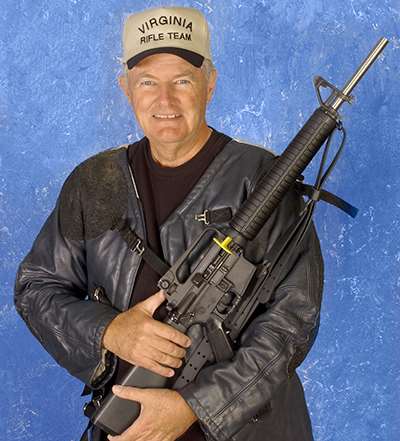
Allan, who grew up near Cincinnati, is the product of a time long-gone in many parts of America when, as he says, “gun control meant shooting well.”
“I was introduced to shooting as most kids were in those days through BB guns. I started with a Daisy Red Ryder—which I still own. At age 11, I was in the Cub Scouts of America and our leader was a World War II Marine Corps vet who thought that every young man needed to learn how to shoot a rifle. So, he said, ‘How many of you guys want to learn how to shoot?’ My hand was up higher than anybody else.”
“The church down the street had a 10-point rifle range in the basement. In grade school, I would carry my Winchester Model 75 and two boxes of ammo to school with my books and a packed lunch. My rifle and the ammo would sit in the cloak room until after school and I would walk down the street to the church and shoot.”
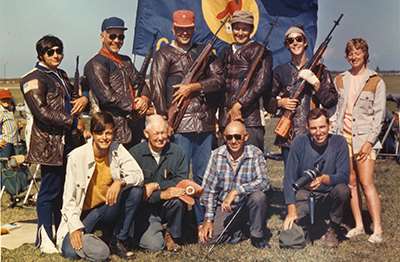
Thus, Allan Cors was introduced to a life-long passion for competitive shooting. He didn’t take it up again until 1965, when he needed a break from his six days a week with the Judiciary Committee.
“Encouraged by my wonderful wife, Darleen, I got into highpower shooting. I had a number of beautiful M1 rifles. I knew how to shoot them, but not well. So, I joined the Virginia State Highpower Rifle Team.
“Once again, mentoring came to the rescue. I was struggling. And about three or four months into it a guy named Clint Fowler took me under his wing and showed me some solid shooting positions, which [are] critical in highpower shooting. With his help I was a Distinguished Rifleman by 1967.”
Mentoring once again was key to another of his Second Amendment passions, firearm collection and history. Allan started collecting when he was 18.
He recalls: “Somebody told me the finest military rifle collection in the United States was just two blocks from my house! It was owned by Bob Rubendunst and, thus, began a lifelong friendship and a great education.
“If I’d buy a rifle that had missing parts, Bob would say, ‘Leave it here for a couple of weeks.’ I’d come back, and the part would be replaced or made and in the rifle. It was a wonderful start.”
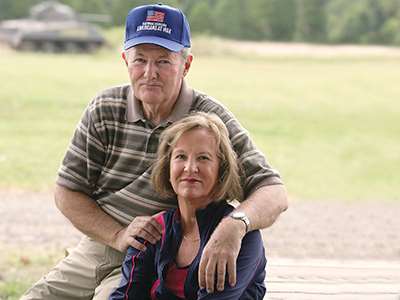
In 1962, when he and Darleen moved to Washington, D.C., he became friends with people who ran Interarmco in Alexandria, Va.—the greatest importer of military surplus firearms in the country.
“Firearms came in from nations across the world—hundreds of thousands of rifles and handguns in conditions from junk to brand new.
“I remember when British No. 4 (T) sniper rifles came in. There was a mountain of them—wooden chests stacked 13 feet high and 30 feet wide, each containing rifles, scopes and accoutrements.”
Allan Cors recalls the going price on pristine Mauser rifles was $17. These were the salad days for collectors.
Allan is often asked about his favorite firearms. The top two are M1 Garands, both of which reside in the NRA’s National Firearms Museum.
His first is a Springfield Armory M1 rifle, serial number 1,000,000 presented to its designer, self-taught firearm genius, John Garand, upon his retirement in 1953. The rifle was the only reward the inventor received for his remarkable contribution to American victories in World War II.
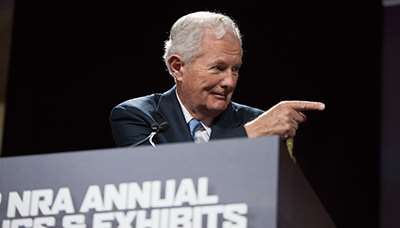
After Garand’s death, the family offered the rifle for sale. Allan made an offer and was interviewed over dinner by the inventor’s wife and son. Though his bid was not the highest, he received the historic rifle.
“I felt very good that they trusted me to do the right thing. Let’s face it, we are only temporary custodians of these things. They are here in our hands for a while, and then they are passed on to the next generation.”
His second-favorite rifle is a like-new, shop-made Garand copy built by the Japanese navy. This rifle never saw action and was an extraordinary G.I. bringback. It also resides in the National Firearms Museum.
Allan, who would travel with friends four times a year to attend the Ohio Gun Collector’s Association (OGCA) shows in Columbus, Ohio, encountered the ultra-rare Japanese M1 through a collector of what he called “oddball semi-autos.”
“I bought it. I was making about $6,000 a year at the time. I had a wife and two kids at home. On the way home, my friends said, ‘What did you do? You are a fool. You paid 300 bucks for that Japanese rifle!’ I’m glad I did.”
As a collector, Allan is also deeply committed to the preservation of other historic military artifacts. In fact, he made a remarkable transition from the study and preservation of historic small arms, to larger artifacts. Much larger.
Allan Cors, now a resident of Naples, Fla., has amassed one of the largest military vehicle collections in the nation, housed in the Virginia Museum of Military Vehicles (VMMV) in Prince William County.
He started his collection in 1982 with a Ford-manufactured 1942 jeep, which replaced his car in the Cors’ two-car garage. That was followed by a weapons carrier, which put Darleen’s car into the weather.
In 1985, after a trip to England during which he met British collectors of tracked vehicles, “I bought a Stuart tank—a Stuart M5A1 light tank. Twin Cadillac engines, 37 mm ‘pop gun’ in the turret. Really a fast machine. The engines were the same as in a 1941 Cadillac sedan.
“Then it just went berserk after that. Between then and 1989, I filled a warehouse in Crystal City, Va., and a barn in Warrenton, Va.” Ultimately, he purchased what is known as the “tank farm” in Virginia to house the collection which has grown to contain nearly 100 operational military vehicles.
As part of the collection, Cors began conducting open house events which featured speakers—mostly military veterans—recounting their wartime experiences and the very meaning of their service to protect American liberty.
“It was at that time I realized my real interest was not so much the vehicles. They were and still are very interesting. But to me, they are a medium for telling the story of those who served.
“So in 2003, a Vietnam vet said to me, ‘We don’t want to go to our graves being accused of being baby killers.’ And those of us who were around at that time know what that vet was talking about. Vets came home and they were spat upon, jeered, given obscene gestures if they wore their uniforms.
“So I thought: What can be done to honor Americans who have served the nation?”
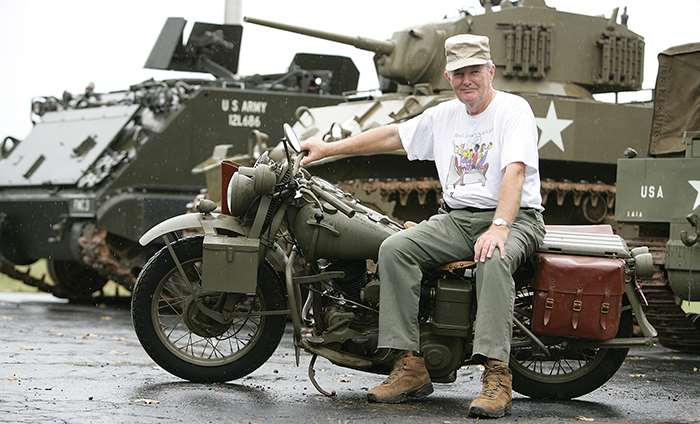
Thus was born what will ultimately be a $100 million project aptly named the National Museum of Americans in Wartime. Located near the Quantico Marine Base in Virginia, site preparation has begun. It is planned as a unique experience with a 90,000 sq.-ft. center with permanent and temporary exhibits. What will set it apart from other museums will be its operational military vehicles and outdoor exhibits—“landscapes of war”—on a sprawling 70-acre tract that will recreate battle sites, such as World War I trenches, and a battle-ravaged French village.
“Our purpose is to tell the stories of the men and women who served and of the families who waited for them at home, and of the people who supported them on the home front. These wartime stories will be told in terms of the values Americans demonstrated in serving their country--loyalty, integrity, courage, leadership, honor, duty, sacrifice. They are values that apply not only in the military environment, but in my view, that apply to our own personal lives. They apply in our families and our communities, our churches and synagogues—every aspect of our lives. Those are values worth talking about and to share with future generations.”






































